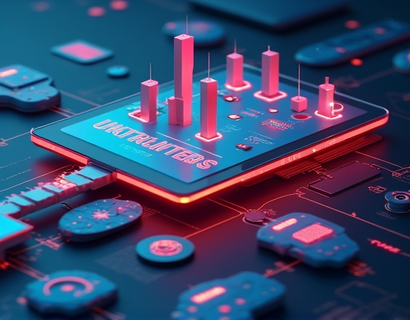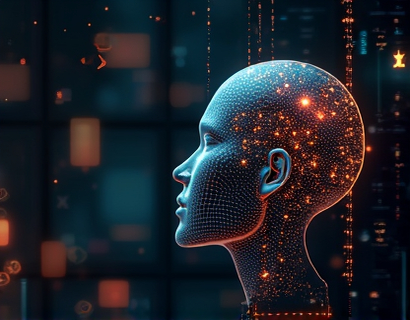AI Chat Avatars: Revolutionizing Digital Interaction
The advent of AI chat avatars marks a significant milestone in the evolution of digital interaction. These sophisticated entities are designed to engage users in meaningful conversations, offering an immersive and enlightening experience. As technology advances, the integration of artificial intelligence into chat interfaces has transformed the way we communicate online, breaking barriers and redefining the digital landscape.
The concept of an AI chat avatar is not new, but recent advancements have brought these virtual entities to a level of sophistication previously seen only in science fiction. These avatars are engineered to navigate the vast digital universe, interacting with users in a manner that simulates human-like conversation. The goal is to create a seamless experience that not only informs but also engages, making the digital interaction as natural and intuitive as possible.
Understanding AI Chat Avatars
At their core, AI chat avatars are powered by advanced natural language processing (NLP) and machine learning algorithms. These technologies enable the avatars to understand, interpret, and respond to user inputs with a high degree of accuracy and context awareness. The avatars are trained on vast datasets, allowing them to draw from a wide range of knowledge and topics, making them versatile and capable of handling diverse user queries.
The development of AI chat avatars involves several key components. First, there is the natural language understanding (NLU) module, which interprets user input and extracts meaningful information. This is followed by the dialogue management system, which determines the appropriate response based on the context of the conversation. Finally, the natural language generation (NLG) module crafts the avatar's response, ensuring it is coherent, relevant, and engaging.
Applications and Use Cases
The applications of AI chat avatars are vast and varied, spanning multiple industries and domains. In customer service, these avatars can provide 24/7 support, handling a wide range of inquiries and issues with efficiency and consistency. They can guide users through complex processes, offer product recommendations, and even resolve complaints, all while maintaining a friendly and professional demeanor.
In education, AI chat avatars can serve as interactive tutors, providing personalized learning experiences. They can adapt to a student's learning pace, offer explanations in multiple formats, and even engage in discussions to deepen understanding. This personalized approach can significantly enhance the learning process, making education more accessible and effective.
The healthcare sector is another area where AI chat avatars can make a substantial impact. These avatars can assist patients with symptom checking, provide health advice, and even schedule appointments. They can also offer emotional support and companionship, which is particularly valuable for patients with chronic conditions or those living alone.
Designing Engaging Conversations
Creating engaging conversations with AI chat avatars requires a thoughtful approach to design and implementation. One crucial aspect is the avatar's personality and tone. Developers must carefully craft the avatar's voice to ensure it is relatable and appealing to the target audience. This involves selecting the right level of formality, humor, and empathy to create a connection with users.
Another important factor is the conversational flow. The avatar should be able to maintain a natural pace, avoiding abrupt transitions and ensuring that the conversation feels fluid and natural. This can be achieved through advanced dialogue management techniques that take into account the context, previous interactions, and user preferences.
Interactive elements also play a significant role in enhancing the user experience. AI chat avatars can incorporate multimedia content such as images, videos, and even virtual reality elements to make the conversation more engaging and informative. For example, in a travel application, an avatar could show users virtual tours of destinations, providing a richer and more immersive experience.
Technological Advancements
The rapid advancement of AI technologies has been instrumental in the development of sophisticated chat avatars. Deep learning models, particularly those based on transformer architectures, have significantly improved the ability of these avatars to understand and generate human-like text. These models can process large amounts of data and capture complex patterns, enabling more accurate and contextually relevant responses.
Additionally, the integration of multimodal learning allows AI chat avatars to understand and respond to various forms of input, including text, voice, and even visual cues. This multimodal approach enhances the avatar's ability to interpret user intent and provide more nuanced and appropriate responses.
Cloud computing has also played a crucial role in the deployment of AI chat avatars. By leveraging cloud resources, these avatars can scale seamlessly to handle a large number of concurrent users, ensuring low latency and high performance. This scalability is essential for applications that require real-time interaction, such as customer service chatbots.
Challenges and Considerations
Despite the numerous benefits, the development and deployment of AI chat avatars come with challenges. One major concern is the issue of bias in AI models. Since these avatars are trained on large datasets, they can inadvertently inherit biases present in the data. Developers must implement rigorous testing and validation processes to identify and mitigate these biases, ensuring that the avatars provide fair and unbiased interactions.
Privacy and security are also critical considerations. AI chat avatars often handle sensitive user data, and it is essential to implement robust security measures to protect this information. Compliance with data protection regulations and transparent data handling practices are paramount to building user trust.
Another challenge is the need for continuous learning and improvement. As user interactions increase, the avatars must adapt and evolve to maintain their effectiveness. This requires ongoing training and updates to the AI models, as well as the incorporation of user feedback to refine the avatar's performance.
Future Prospects
The future of AI chat avatars is promising, with ongoing research and development poised to push the boundaries of what these virtual entities can achieve. One exciting area is the integration of emotional intelligence, enabling avatars to recognize and respond to users' emotions. This could lead to more empathetic and personalized interactions, further blurring the line between human and machine communication.
Another frontier is the development of avatars that can operate in augmented and virtual reality environments. These immersive settings offer new possibilities for interactive experiences, from virtual shopping assistants to educational guides in virtual classrooms.
Moreover, the convergence of AI chat avatars with other technologies, such as the Internet of Things (IoT) and 5G networks, will enable more seamless and integrated interactions. For instance, an avatar could control smart home devices, provide real-time updates, and offer personalized recommendations based on the user's environment and preferences.
Conclusion
AI chat avatars represent a significant leap forward in digital interaction, offering a blend of intelligence, engagement, and versatility. As these technologies continue to evolve, they will play an increasingly important role in various aspects of our lives, from everyday communication to specialized applications in industries like healthcare and education. By embracing the potential of AI chat avatars, we can create more intuitive, efficient, and enjoyable digital experiences.






















